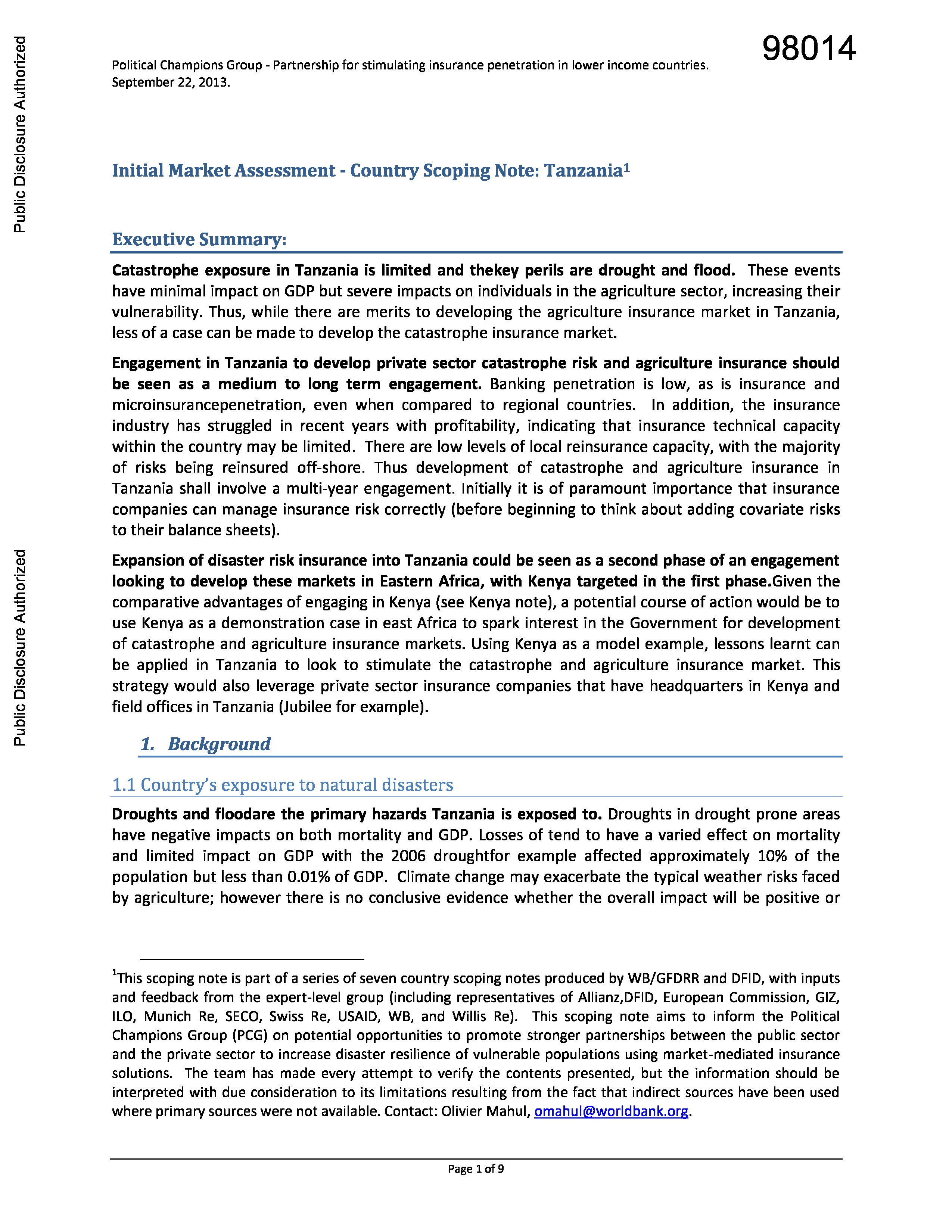Catastrophe exposure in Tanzania is limited and the key perils are drought and flood. These events have minimal impact on GDP but severe impacts on individuals in the agriculture sector, increasing their vulnerability. Thus, while there are merits to developing the agriculture insurance market in Tanzania, less of a case can be made to develop the catastrophe insurance market.
Engagement in Tanzania to develop private sector catastrophe risk and agriculture insurance should be seen as a medium to long term engagement. Banking penetration is low, as is insurance and micro-insurance penetration, even when compared to regional countries. In addition, the insurance
industry has struggled in recent years with profitability, indicating that insurance technical capacity within the country may be limited. There are low levels of local reinsurance capacity, with the majority of risks being reinsured off-shore. Thus the development of catastrophe and agriculture insurance in Tanzania shall involve a multi-year engagement. Initially, it is of paramount importance that insurance companies can manage insurance risks correctly (before beginning to think about adding covariate risks to their balance sheets).
Expansion of disaster risk insurance into Tanzania could be seen as the second phase of an engagement looking to develop these markets in Eastern Africa, with Kenya targeted in the first phase. Given the comparative advantages of engaging in Kenya (see Kenya note), a potential course of action would be to use Kenya as a demonstration case in east Africa to spark interest in the Government for the development of catastrophe and agriculture insurance markets. Using Kenya as a model example, lessons learned can be applied in Tanzania to look to stimulate the catastrophe and agriculture insurance market. This strategy would also leverage private sector insurance companies that have headquarters in Kenya and field offices in Tanzania (Jubilee for example).

